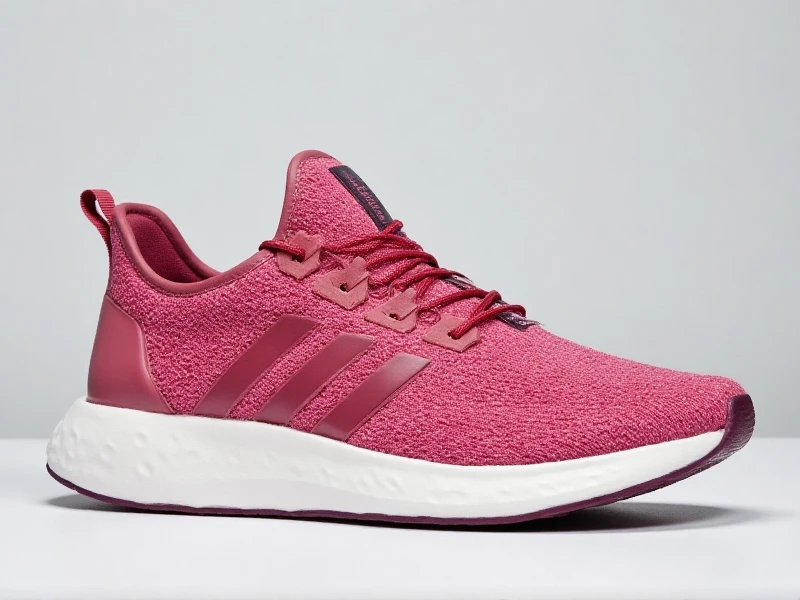
Finding the Perfect Fit: Your Guide to Women's Running Shoes
2025-06-11
Here is a 600-word SEO article focusing on the keyword "women's running shoes," adhering to your specifications:
For countless women, running is more than exercise—it’s freedom, therapy, and pure exhilaration. But the journey to that runner’s high starts with one crucial element: the right pair of women's running shoes. Wearing ill-fitting or unsuitable shoes isn't just uncomfortable; it can lead to blisters, injuries, and derail your fitness goals. So, how do you navigate the vast array of choices and find the perfect match for your feet and running style? Let's dive in.
Understanding Unique Anatomy & Biomechanics
It's essential to recognize that women's feet are anatomically distinct. Generally, they tend to be narrower in the heel relative to the forefoot and have a proportionally different arch structure compared to men's feet. Women's running shoes are specifically engineered with these nuances in mind. Manufacturers incorporate features like:
Sized & Scaled Specially: Not just smaller versions of men's shoes, they feature a narrower heel and a wider forefoot in proportion to length.
Softer Cushioning: Due to differences in weight distribution and impact forces at landing.
Higher Arch Support: Reflecting the statistically higher prevalence of arches requiring support.
Lightweight Construction: Prioritizing agility and responsiveness favored by many female runners.
Know Your Feet: The Foundation of Choice
Before hitting 'add to cart', take a moment to understand your unique feet:
1. Foot Type/Arch: Is your arch high, low (flat), or neutral? Perform the classic "wet test": wet the sole of your foot, step onto a dark paper bag or cardboard, and analyze the imprint. A wide band connecting heel and toe indicates low arches, a thin band high arches, and a medium curve suggests neutral. This is critical for determining pronation – the natural inward rolling of your foot during impact.
2. Neutral vs. Stability vs. Motion Control:
Neutral: Ideal for neutral runners with efficient biomechanics needing balanced cushioning. Great for high arches.
Stability: Designed to combat mild to moderate overpronation (excessive inward roll). Offers medial support (often a denser foam or guide rail). Ideal for low to neutral arches.
Motion Control: For severe overpronation, offering maximum support and rigidity on the inside. Often recommended under professional guidance. Essential for some with very flat feet.
3. Terrain: Will you be primarily on roads, trails, or the treadmill? Dedicated road-running shoes prioritize cushion and responsiveness on pavement. Trail-running shoes feature aggressive lugs, protective toe caps, and water-resistant uppers for uneven, slippery ground.
Key Features to Look for in Women's Running Shoes
The right women's running shoes incorporate these elements for performance and comfort:
Responsive Cushioning: This absorbs impact forces and helps propel you forward. Technologies vary (foams like EVA, TPU, Pebax) – look for the balance of softness and energy return that feels natural to you. Don't chase max cushion if it feels unstable.
Secure Fit & Breathable Upper: A well-structured mesh upper wraps your midfoot comfortably without pressure points. Lightweight materials ensure airflow to keep feet cool and dry. The heel counter should cradle your heel securely without slipping.
Supportive Midsole: As dictated by your foot type and pronation level. Stability elements like dual-density foams or medial posts should be integrated smoothly into the shoe's ride.
Durable Outsole: High-wear rubber in key areas (like the heel and ball of the foot) maximizes longevity without excessive weight. Flex grooves enhance natural foot movement.
Appropriate Weight: Generally lighter for speedwork and training, slightly more cushioned (and heavier) for long distances. Many top women's running shoes balance this well.
Correct Foot Shape: Ensure the shoe accommodates the width and volume of your foot without restriction. Brands often offer standard and wide (D) widths.
Popular Women's Running Shoe Categories (Examples)
Daily Trainers: (e.g., Brooks Ghost, Nike Pegasus, ASICS Gel-Cumulus) Versatile workhorses suitable for most paces and distances.
Maximum Cushion: (e.g., Hoka Bondi, Brooks Glycerin, New Balance Fresh Foam More) Ideal for high mileage, recovery runs, or runners prioritizing impact absorption.
Speed & Racing: (e.g., Adidas Adios, Saucony Endorphin Speed/Racer, Nike ZoomX Vaporfly Next%) Plates and ultra-lightweight materials focus on propelling forward efficiently for faster sessions and race day.
Trail: (e.g., Salomon Speedcross, Hoka Speedgoat, Altra Lone Peak) Aggressive grip, rock plates, and protective builds for off-road adventures.
Invest in Your Stride: Proper Fit is Non-Negotiable
Always try shoes on at the end of the day when feet are naturally swollen. Bring your running socks. A perfect fit means:
Thumb's Width Space: At least a thumb's width between your longest toe and the end of the shoe.
Secure Heel: Heel lifts minimally without slippage.
Accommodated Midfoot: Comfortable snugness, no pressure points or pinching at the arch or sides.
Toe Wiggle Room: Toes shouldn't feel cramped.
"Run" Around: Walk or lightly jog (in-store if possible). Trust how it feels immediately; significant discomfort usually doesn't fade.
Ignoring fit compromises comfort, performance, and injury risk. Don't be wedded to a size; prioritize fit above the number. Visit a specialized running store for gait analysis if possible – it's invaluable insight.
Finding your ideal pair of women's running shoes takes some research and self-knowledge, but the reward is miles of confident, pain-free running. Listen to your feet, understand your needs, and embrace the journey to your perfect run. Happy trails!
CATEGORYS: